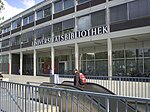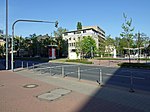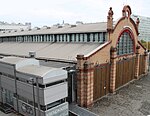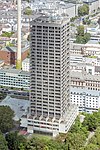KfW IPEX-Bank
2008 establishments in GermanyBanks of GermanyCompanies based in FrankfurtDevelopment finance institutions

The KfW IPEX-Bank GmbH is a wholly owned subsidiary of KfW (Kreditanstalt für Wiederaufbau; engl. credit institute for reconstruction) and since 1 January 2008 acts as a legally independent bank governed by the German Banking Act. Its work focuses on international project and export financing. The bank's headquarter is located in Frankfurt, where the KfW IPEX-Bank uses the Westarkade, which was completed in 2011.
Excerpt from the Wikipedia article KfW IPEX-Bank (License: CC BY-SA 3.0, Authors, Images).KfW IPEX-Bank
Bockenheimer Landstraße, Frankfurt Westend Süd (Innenstadt 2)
Geographical coordinates (GPS) Address Nearby Places Show on map
Geographical coordinates (GPS)
| Latitude | Longitude |
|---|---|
| N 50.120396 ° | E 8.65544 ° |
Address
Haupthaus
Bockenheimer Landstraße
60325 Frankfurt, Westend Süd (Innenstadt 2)
Hesse, Germany
Open on Google Maps










